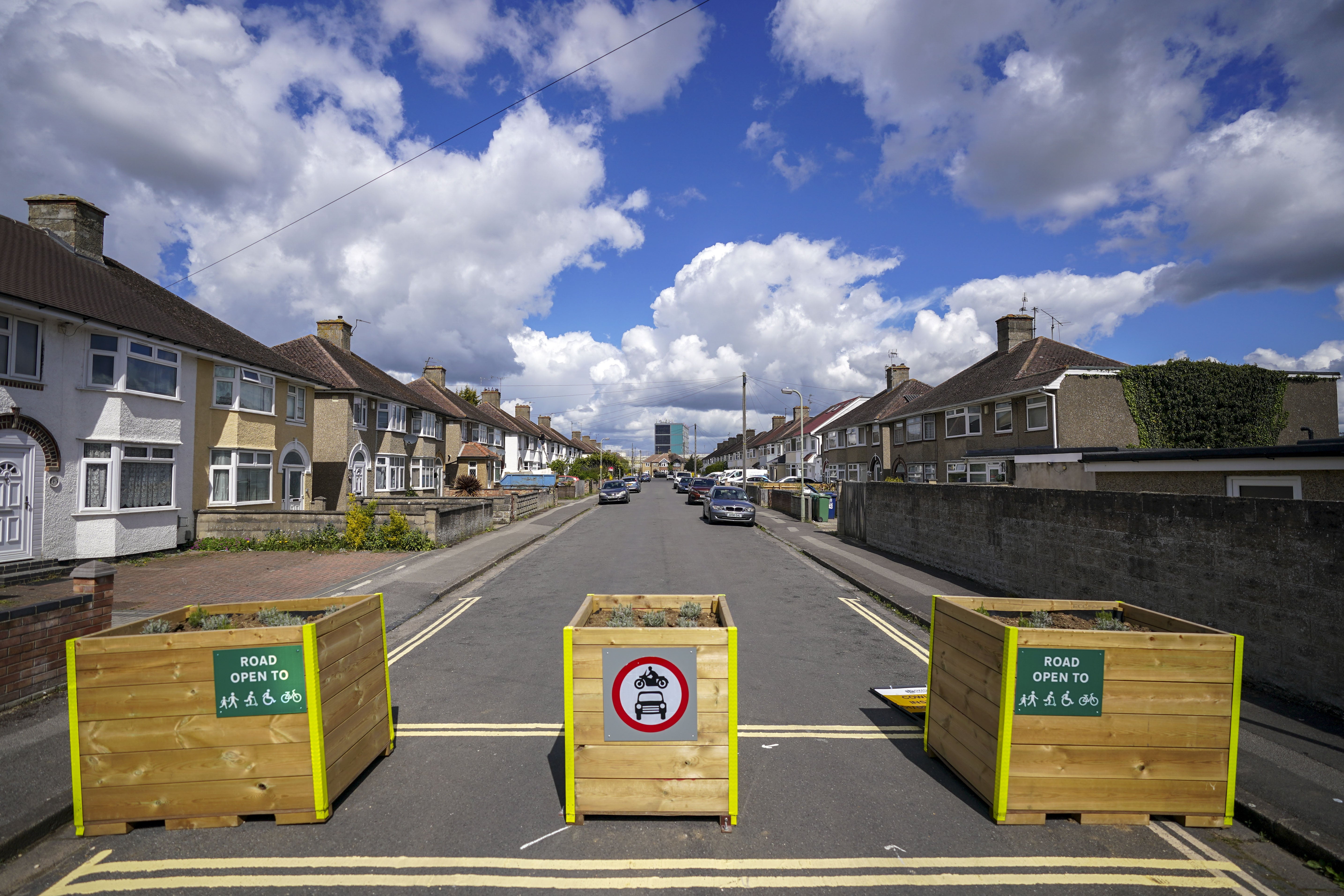Low-traffic neighbourhood schemes halve number of road injuries, study finds
The schemes do not increase injury rates on boundary roads, study finds

London neighbourhoods in which low-traffic schemes have been introduced have seen road injuries fall by half, research has found.
The study also found no evidence of an increase in danger on roads at their outer boundaries.
The study, by academics at the London School of Hygiene and Tropical Medicine, Westminster University and Imperial College London, examined casualty data for 72 low-traffic neighbourhoods (LTNs) implemented in London between March and September 2020.
LTNs cut the number of injuries most effectively among pedestrians and people in cars, while the schemes appear to have had little effect on cyclists’ injury rates, the study showed.
The schemes, which have triggered fierce criticism from some residents, were rolled out across London boroughs under Covid-19 emergency legislation, with 4 per cent of the Greater London population living in areas covered by the driving restrictions brought in during the period examined.
LTNs aim to boost the number of people walking and cycling by discouraging short car journeys. They cut the amount of through-traffic on residential streets by putting up physical barriers including planters and bollards as well as measures such as traffic cameras.
The schemes have drawn ire from some who argue that rather than discouraging motor vehicle use, they simply displace traffic onto other roads and streets.
Rachel Aldred, professor of transport at Westminster University and study co-author, told The Independent: “We found a substantial fall in injuries overall, with particularly impressive improvements for pedestrians, for whom injuries fell by 85 per cent relative to background changes.
“This suggests that extending LTNs could make a large difference to pedestrian injuries, given that over half of such injuries take place on urban minor roads – the type of roads most likely to be suitable for LTN schemes,” she added.
The study found a 63 per cent reduction in injuries for car occupants, and a 12 per cent fall for cyclists.
While critics had also claimed LTNs are disproportionately found in more affluent areas, research published earlier this year found they benefit London’s most deprived residents. The study, which was also led by Prof Aldred, found that people living inside LTNs were typically demographically similar to those living near an LTN boundary road.
The latest study compared police data on casualties between October to December 2020 to the same periods in 2018 and 2019. Injuries fell to a ratio of 0.51 to 1 compared with the rest of London during the same period in the months the schemes were in place.
There was no fall in injuries from 2018 to 2019 in these areas, underlining that the scheme was driving being the neighbourhoods’ improvement in safety.
Significantly, the study also observed no change in injury numbers or risk on LTN boundary roads, which are defined as injuries occurring less than 25 metres a scheme.
Last month, the Court of Appeal ruled the closing off of roads in London was lawful, overturning a January High Court judgment, which determined that Transport for London’s (TfL) measures should be “substantially amended”.
Mayor Sadiq Khan has vowed not be diverted from traffic reduction efforts by high-profile campaigns by a “vocal minority”. A poll last October found that just 19 per cent of people in London in oppose measures like LTNs, while 52 per cent support them, and 25 per cent are neutral.
Join our commenting forum
Join thought-provoking conversations, follow other Independent readers and see their replies
Comments
Bookmark popover
Removed from bookmarks